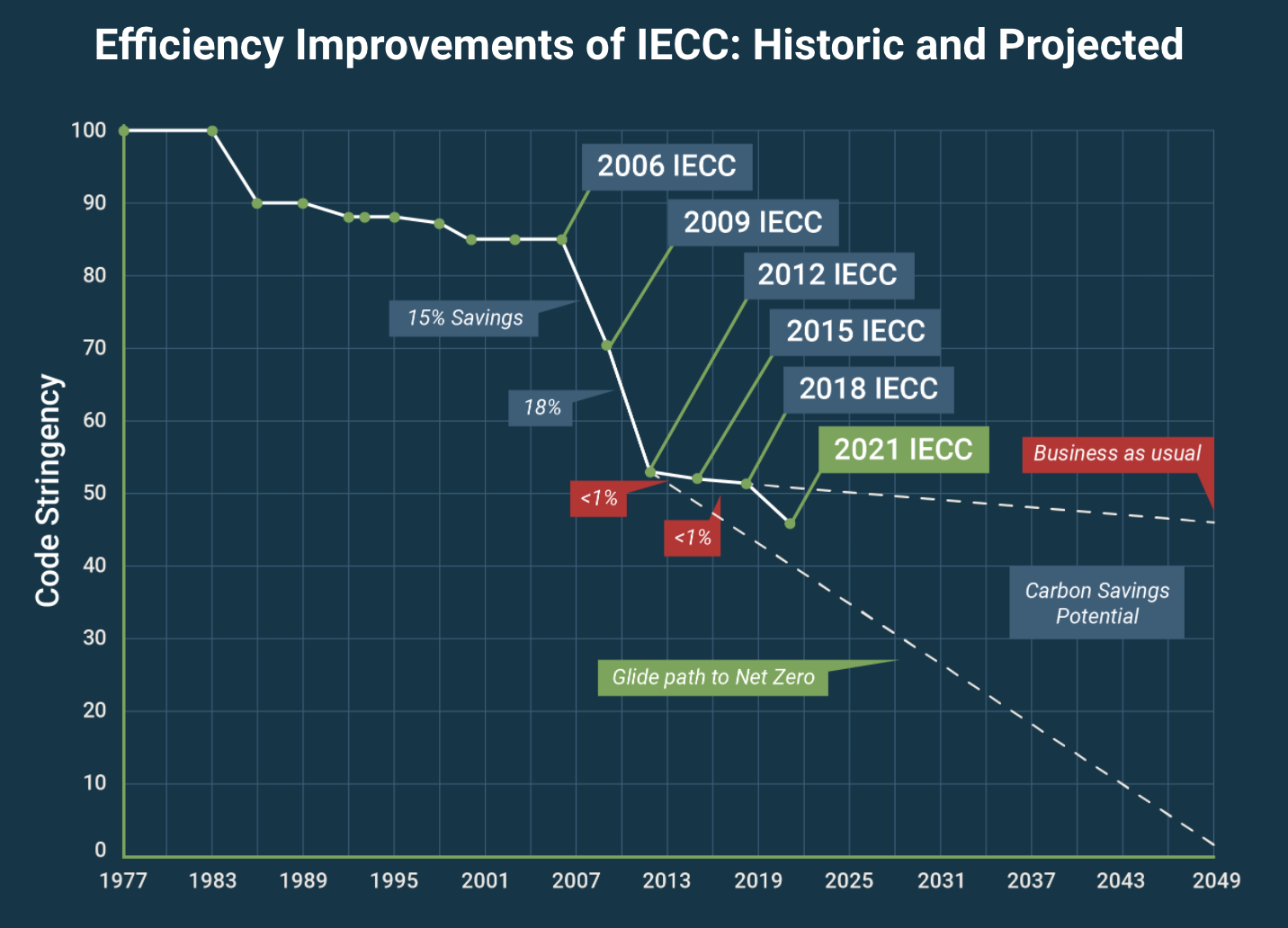Energy Codes Explained Volume I: IECC 2021
The 2021 IECC has been approved and finalized, it is ready for adoption by states and local governments, and it has been determined by the US Government to be 9% more efficient than the 2018 IECC.
The evaluation of the 2021 IECC energy efficiency was performed by Pacific Northwest National Laboratory (PNNL) , including good friend and former employee of Ekotrope Rob Salcido. PNNL is one of the United States DOE national laboratories and is considered a leading center for scientific discovery in technological innovation in sustainable energy and national security.
The evaluation was approved by the DOE on July 21, 2021. The determination of energy efficiency improvements are as follows:
9.4% site energy savings
8.8% source energy savings
8.7% energy cost savings
8.7% carbon emissions
So - what actually changed to generate this additional energy efficiency?
The Highlights
If you just want the highlights, here they are:
Insulation R value requirements increased. Significantly, in some places.
There are some new and modified mechanical ventilation fan requirements.
There is a whole new section, requiring at least one enhanced energy efficiency measure to be chosen from a list of 5-6 options.
For performance path builders, 3 ACH50 is no longer mandatory anywhere in the US. 5 ACH50 is the new mandatory requirement.
About 10% of counties changed to a new climate zone (yes, climate change is real).
If you’re interested in more detail, keep reading!
The Changes
There were dozens of adopted proposals that impact energy efficiency. Below is a list of changes that are particularly significant and relevant to energy modeling and code compliance calculations
Items that Improve Efficiency:
High efficacy lamps must now be 70 Lumens per Watt. High efficacy luminaires must be 45 lumens per watt. 100% of permanently installed lighting must be high efficacy.
Wood frame wall R value requirements increased in climate zone 4-5.
Slab insulation R value and depth requirements increased in climate zones 3-5.
Ceiling insulation requirements increased in climate zones 2-8.
Window U Factor requirements increased in climate zones 3-8.
Mechanical ventilation fan efficacy requirements increased.
ERV or HRV required in climate zones 7-8.
Added fan efficacy requirement for CFIS systems (or air cyclers).
Addition of Section R408, which requires an additional energy efficiency measure to be chosen from a list of options.
New SHGC requirement for fenestration in climate zones 5 and marine 4.
Reduced SHGC requirements in climate zones 1-3.
Ducts entirely within the thermal boundary must now be tested. The total duct leakage requirement is twice that of ducts that are not entirely within the thermal boundary.
Performance path (R405) hot water usage assumptions are reduced.
Limits the contribution of onsite generation to 5% of total energy reduction for the ERI path (R406)
Reduces ERI compliance thresholds for the ERI path (R406) to IECC 2015 levels.
Appendix RB, which is not part of the base code, provides additional “zero energy” thresholds. This appendix would need to be adopted separately by municipalities.
Items that Decrease Efficiency:
IECC 2018 air sealing requirements are changed from mandatory to prescriptive, and a mandatory 5 ACH50 backstop is added.
Approximately 400 out of 3,000 US counties have been reassigned to new climate zones. Most have been assigned to warmer climate zones.
Added hot water distribution system compactness factor to the proposed home for the performance path (R405).
For a full list of changes, we highly recommend reading the technical analysis performed by PNNL. Appendix A contains the list of adopted change proposals and how they may impact energy efficiency.
The Impact
Clearly, most changes increase energy efficiency. Insulation requirements have been significantly increased in many areas, and an additional energy efficiency measure requirement has been added on top of the general code requirements. However, the last two items on the list are significant and may provide a welcome relief for builders in some areas.
Builders using the performance path or ERI path (R405 or R406) will no longer be required to meet 3 ACH50 in any climate zones. Instead, the mandatory requirement is changed to 5 ACH50.
Additionally, over 10% of climate zones have changed, and most of these changes result in warmer assigned climate zones and therefore reduced insulation requirements. The below map shows where climate zones have changed. Most notably, several high population areas have changed, including:
Dallas/Fort Worth (CZ3 → CZ2)
Nashville area (CZ4 → CZ3)
Northern North Carolina (CZ4 → CZ3)
Southern Wisconsin (CZ6 → CZ5)
The map below shows all counties that have been re-assigned to a new climate zone.
Overall, the 2021 IECC represents a major change in energy efficiency requirements. At Ekotrope, we expect performance path modeling to be even more important due to the ACH50 mandatory threshold change and the necessity of tradeoffs and value engineering due to the increased efficiency levels. Our engineers are working to ensure that the 2021 IECC is fully supported as part of our market-leading suite of code compliance tools in Ekotrope RATER.


